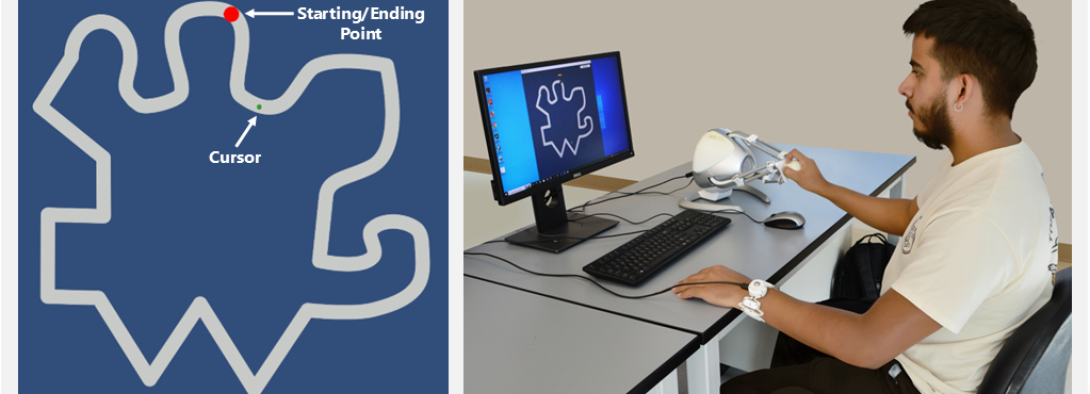The mirror tracing task is an adaptation of Snoddy’s (1920) original experiment, designed to study the impact of real-time haptic feedback on the learning and performance of a complex motor task.
In this task, participants trace an abstract shape on a computer screen using a three-degree-of-freedom manipulator with mirrored cursor movements. The tracing shape was made to reflect navigation using flexible tools in endovascular surgery with sharp turns and curved sections, inspired by the complex anatomy of human vasculature. While performing the tracing task, participants also receive real-time vibrotactile feedback based on performance metrics measured for moving windows through a wearable bracelet. The introduction of haptic cues can prompt trainees to adapt their task completion strategies, resulting in noticeable improvements in performance outcomes.
Current research has looked at the differences in performance for velocity-based feedback metrics, skill retention post-feedback removal and participant trade-off strategies when trained on
speed and accuracy-based performance metrics in sequence. These results can inform training methodologies with real-time haptic feedback for more complex tasks as those in endovascular surgery.

